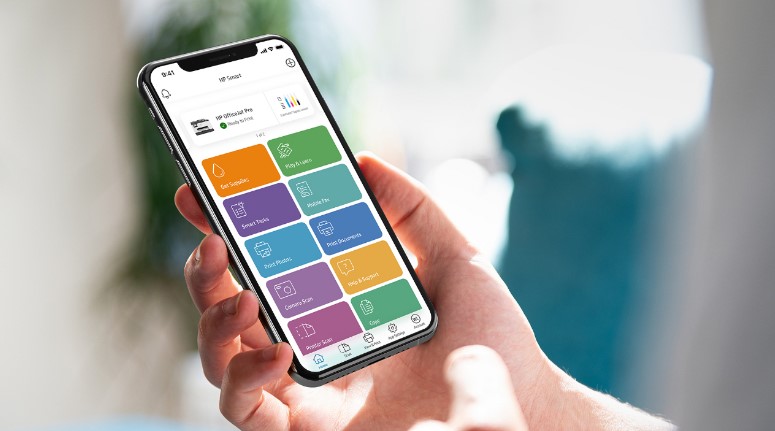Master navigating Max Life Insurance with this comprehensive guide. Your go-to resource for securing your financial future.
Read Also: Best The Downloader App

Introduction
Welcome to your comprehensive guide on Max Life Insurance 🛡️. When it comes to securing your financial future and protecting your loved ones, choosing the right insurance is paramount. In this article, we will explore the world of Max Life Insurance, its various policies, advantages, and how to make the best choice for your needs.
A Brief Overview of Max Life Insurance
Max Life Insurance 🏦 is a leading provider of life insurance solutions in India. With a strong focus on customer satisfaction, Max Life offers a wide range of policies designed to meet diverse needs and financial goals.
Importance of Choosing the Right Insurance
Life is unpredictable, and the future is uncertain. Selecting the right insurance can provide financial security and peace of mind for you and your family. It’s a decision that requires careful consideration and understanding.
Types of Max Life Insurance Policies
Max Life Insurance offers a variety of policies to cater to different requirements. Let’s explore these policy types and their unique benefits.
Term Insurance: Securing Your Loved Ones’ Future
Term insurance 📆 provides pure life coverage for a specified term. It’s a cost-effective way to ensure your family’s financial well-being in your absence. We’ll delve into the specifics and benefits of term insurance.
Whole Life Insurance: Lifetime Coverage and Savings
Whole life insurance 🔄 offers coverage for your entire life and includes a savings component. It’s a long-term investment that provides both protection and a way to build wealth. Discover how it works and why it may be the right choice for you.
Unit-Linked Insurance Plans (ULIPs): Combining Protection and Investment
Unit-Linked Insurance Plans (ULIPs) 💹 offer a dual advantage. They provide life coverage and investment opportunities. We’ll explain how ULIPs work and their potential returns.
Retirement Plans: Ensuring Financial Security in Your Golden Years
Planning for retirement is crucial, and retirement plans 🌅 offered by Max Life can help you secure your financial future after you stop working. We’ll walk you through the benefits and features of these plans.
Advantages of Max Life Insurance
Understanding the advantages of Max Life Insurance can help you make an informed decision about your financial security.
Financial Protection for Your Family
Your family’s financial well-being is a top priority. Max Life Insurance provides a safety net that ensures they are taken care of, even in your absence. We’ll explore how this protection works.
Tax Benefits: Saving More While You Secure Your Future
Tax benefits 📝 are an essential part of Max Life Insurance. Not only do you secure your future, but you also save on taxes. Learn how insurance can be a valuable tool for reducing your tax liability.
Diverse Range of Products to Suit Your Needs
Max Life Insurance offers a wide array of products. No matter your financial goals, there’s likely a policy that suits your needs. We’ll discuss the flexibility and options available to you.
Superior Customer Service: Your Peace of Mind
When it comes to insurance, excellent customer service is non-negotiable. Max Life Insurance is known for its dedication to customer satisfaction. Discover how their superior service can give you peace of mind.
How to Choose the Right Max Life Insurance
Choosing the right Max Life Insurance policy requires careful consideration and evaluation of your unique needs.
Assessing Your Financial Goals and Needs
Your first step is to assess your financial goals and needs. We’ll guide you through the process of understanding what you require from your insurance policy.
Understanding Policy Terms and Conditions
Reading and comprehending the terms and conditions of an insurance policy is vital. We’ll break down the jargon and help you understand what you’re signing up for.
Selecting the Appropriate Coverage Amount
Choosing the right coverage amount is critical. You don’t want to be underinsured or pay for coverage you don’t need. We’ll provide tips on determining the appropriate amount of coverage.
Comparing Policies and Premiums
Comparing policies and premiums is a crucial part of the decision-making process. We’ll show you how to compare Max Life Insurance policies and find the one that fits your budget and needs.
The Application Process
The process of applying for Max Life Insurance involves several steps. We’ll walk you through it to make the application process smooth and straightforward.
Initiating Your Max Life Insurance Application
Starting your application is as simple as it gets. We’ll explain the initial steps to set the process in motion.
Documentation and Verification
Proper documentation and verification are key steps in the application process. We’ll detail the documents you’ll need and what to expect during the verification process.
Medical Examination (if required)
In some cases, a medical examination may be necessary. We’ll clarify when and why it might be needed, as well as what the examination entails.
Policy Issuance and Commencement
Once all requirements are met, your policy will be issued, and its coverage will commence. We’ll explain this final stage in the process.
Making Claims with Max Life Insurance
Making a claim with Max Life Insurance involves a well-defined process. We’ll guide you through each step to ensure a smooth claims experience.
Steps to Initiate a Claim
When the need arises to make a claim, knowing the first steps to take is crucial. We’ll outline the process for starting a claim.
Documentation and Verification
Documentation and verification are standard requirements for claim processing. We’ll provide a checklist of what you need to submit and what to expect during the verification process.
Claim Settlement Process
The final stage is the claim settlement process. We’ll explain how Max Life Insurance processes your claim and what you can expect as the outcome.
Customer Reviews and Testimonials
Real-life experiences and testimonials from other policyholders can offer valuable insights into the benefits and trustworthiness of Max Life Insurance.
Real-Life Experiences: Stories of Benefit
Explore real stories of individuals who have benefitted from Max Life Insurance. These personal experiences can shed light on the practical advantages of their policies.
Customer Satisfaction and Reliability
We’ll take a closer look at customer satisfaction levels and the reliability of Max Life Insurance as reported by policyholders. Understanding the experiences of others can help you make an informed decision.
Max Life Insurance in the Digital Age
With technology advancements, Max Life Insurance has adapted to provide online services and mobile apps for policy management.
Online Services and Mobile Apps
Discover the convenience of managing your Max Life Insurance policies online. We’ll outline the online services and mobile apps available to make policy management a breeze.
Managing Your Policies with Ease
We’ll discuss how these digital tools simplify tasks like premium payments, policy renewals, and accessing policy information at your fingertips.
Frequently Asked Questions (FAQs)
If you have questions about Max Life Insurance, you’re not alone. Here are answers to common queries and expert insights on selecting the right policy.
- What is the cost of Max Life Insurance?
The cost of Max Life Insurance varies based on factors like the type of policy, coverage amount, and your age. We’ll provide an overview of pricing considerations. - How do I choose between different policy types?
Selecting the right policy type can be challenging. We’ll offer guidance on how to match your needs with the most suitable Max Life Insurance policy. - What are the tax benefits of Max Life Insurance?
Max Life Insurance offers tax benefits that can reduce your overall tax liability. We’ll explain these benefits and how they work.
